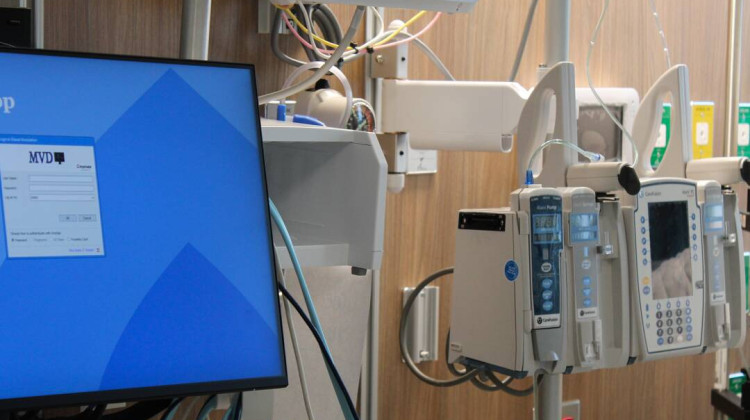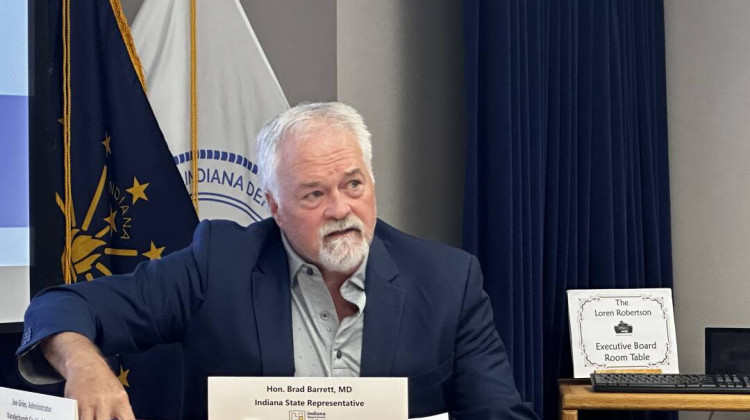
An Indianapolis billboard for MHS, one of the only insurers offering coverage on healthcare.gov in Indiana.
Sarah Fentem/Side Effects Public Media
This year’s enrollment on the federal healthcare marketplace dipped just slightly in Indiana, despite a shortened sign-up period and a drop in federal navigator funding.
According to the final weekly enrollment report from the Centers for Medicare and Medicaid Services, about 167,000 Hoosiers have signed up for marketplace plans in 2018.
That’s a 4.5 percent decrease compared with last year. Indiana is in-line with national numbers (which dropped 5 percent between last year and this year), though the totals won’t be set in stone until around March, thanks to certain people’s ability to sign up during an extended period.
Kaiser Family Foundation Senior Fellow Karen Pollitz said automatic re-enrollments helped keep the numbers high despite the lack of support from the Trump Administration. Unless people actively change or cancel their coverage, she said, they’re enrolled in the same or a similar plan automatically.
“Definitely, that had a lot to do with the numbers being similar,” she said.
Jessica Ellis is the outreach and enrollment director for the Indiana Primary Health Care Association, which helps people sign up for health insurance. She said she doesn’t have specific numbers, but anecdotal evidence from her staff indicates the state didn’t see a lot of new customers.
“They didn’t have a lot of new enrollments, but they had a lot of re-enrollments,” she said. “[There were] consumers coming in just to check their plan information and letting those re-enrollments happen because they did like what they saw.”
Although state-specific numbers aren’t yet available, nation-wide, 28 percent of 2018 enrollments consist of so-called “new” consumers, which did not have a 2017 exchange plan but bought one for this year.
Although the standard enrollment period ended December 15 in Indiana, people whose 2017 provider dropped out of the marketplace can still change their plans.
“They’re eligible for a special enrollment period due to the loss of their former coverage, and that actually lasts for 60 days so they have ‘til the end of February to sign up,” said Pollitz.
That provision covers a lot of Hoosiers — the number of companies in Indiana offering exchange plans has dropped to two, with companies such as MDwise and Anthem pulling out amid political turmoil.
This year, the enrollment period was slashed in half — from 12 weeks to six weeks. Ellis said typically sign-ups hit either close to the beginning or the tail end of open enrollment, but perhaps because of the shortened period, sign-ups were more consistent throughout the entire period.
“People were quicker in years past to come and see us and ask for help,” she said. “They came prepared they came with their renewal letter that the marketplace had sent them.”
Ellis said even so, the final days were “absolutely crazy.” She says the media’s coverage of this year’s enrollment changes helped publicize the deadline change.
This story was produced by Side Effects Public Public Media, a reporting collaborative focused on public health.
 DONATE
DONATE










 Support WFYI. We can't do it without you.
Support WFYI. We can't do it without you.